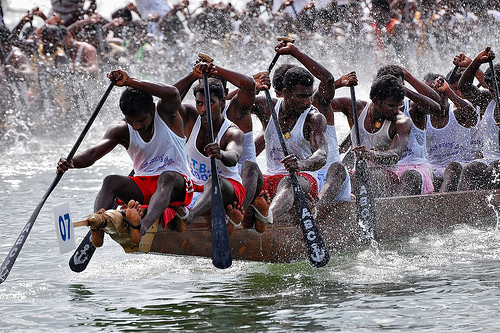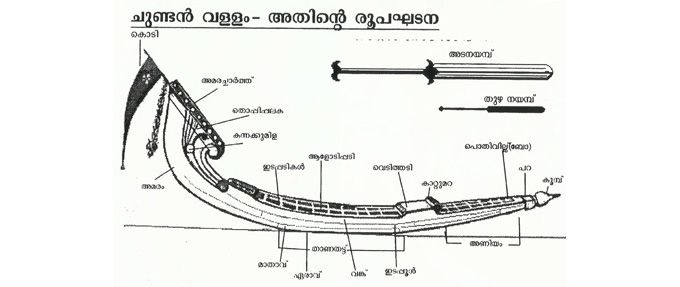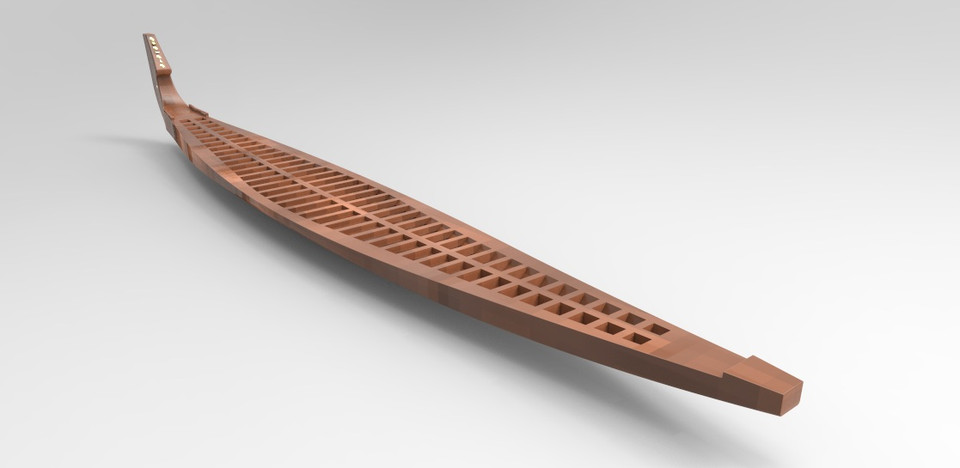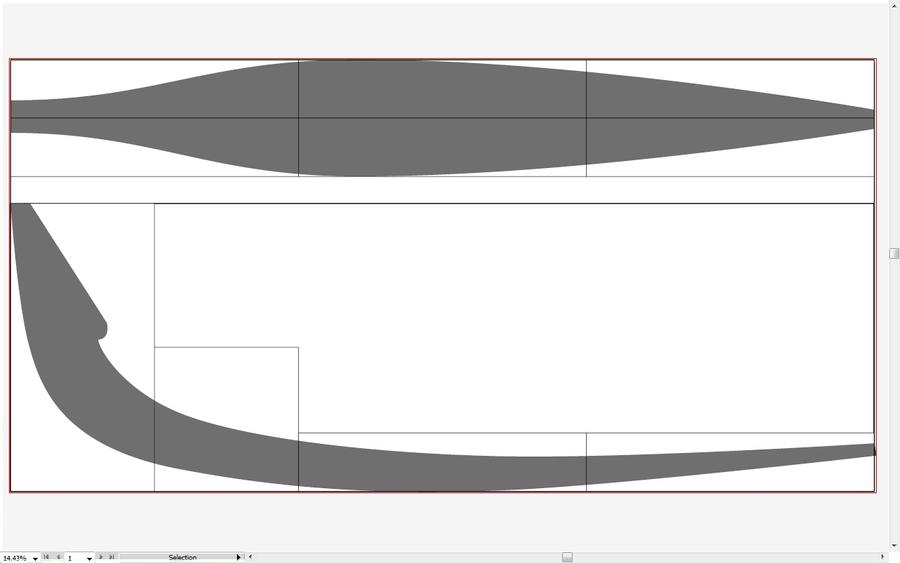
Chundan Vallam (India)
- Name of sport (game): Chundan Vallam
- Name in native language: Chundan Vallam ("Beaked Boat", Malayalam ചുണ്ടൻ വളളം)
- Place of practice (continent, state, nation):
Kerala, India
- History:
Chundan Vallam originated in the 14th century during a war between feudal kingdoms and the kingdom Chembakasseri wasn’t doing too well in this war. So King Devanarayan of Chembakasseri consulted the ancient texts of Sthapathya Veda, a form of traditional architecture linking people to the buildings which they occupy, and thus the King came up with the idea of Chundan Vallam. These massive canoes were designed to hold over 100 paddler-warriors and hold cannons. The ancient design of these boats has survived the centuries as they are still built to the same blueprint over 700 years ago. Overtime, the main use of the boats has moved away from the traditional naval warfare purposes to more of a cultural event, and they no longer carry cannons.
- Description:
Each snake boat belongs to a village along the banks of the river Pampa. Every year the boats are oiled mainly with fish oil, coconut shell, and carbon, mixed with eggs to keep the wood strong and the boat slippery in the water. The village carpenter carries out annual repairs and people take pride in their boat, which is named after and represents their village.
Constructed according to specifications taken from the Sthapathya Veda, an ancient treatise for the building of wooden boats, these boats vary from 100 to 138 feet in length. With the rear portion rising to a height of about 20 feet, and a long tapering front portion, it resembles a snake with its hood raised. Hulls are built of planks precisely 83 feet in length and six inches wide. The boats are a good example of ancient vishwakarma' prowess in naval architecture.

Traditionally a boat will be commanded by a village leader (kaarnavan or karanaadhan) with first adanayampu, and under him there will be three main paddlers who control the movement of the boat with a 12-foot-long (3.7 m) main rudder-oar (adanayampu). Sitting two to a row along the length of the boat, there will be 64 paddlers, representing 64 art forms (or on occasion 128 paddlers). They row in rhythm of the vanchipattu ('boat song'). There will be around 25 singers in a row at the middle between the paddlers. In the middle of the second half of the boat is a platform for eight people to stand from where the cantor will lead the song. They represent the Ashtadikpalakas (Devas or gods who guard the eight directions).

There are several sizes of boat, and there are often teams of over 100 people. The majority of teammates are paddlers, starting off in single file at the narrow bow of the boat, then double file near the front and the stern. The paddlers in the middle are separated by the central fire platform, which would hold a cannon during battle. Today, a couple men stand on the fire platform, beating it with poles, and surrounded by others singing the Vanchippattu, traditional folk songs about paddling, life and the gods. The beat of the poles and rhythm of the Vanchippattu keep the paddlers in time, while it is at the tail where the bot keeps going in the right direction. The boats are commandeered by a chief, who occupies the highest position on the tail, flanked by a team of Amarackars (helmsmen) who steer the boat to victory.

- Current status:
The Aranmula Boat Race takes place at Aranmula, India near a temple dedicated to Lord Krishna and Arjuna. Thousands of people gather on the banks of the river Pampa to watch the snake boat races. Nearly 30 snake boats or "chundan vallams" participate in the festival. The oarsmen sing traditional boat songs and wear white dhotis and turbans. The golden lace at the head of the boat, the flag and the ornamental umbrella at the center make it a show of pageantry too.
Today Chundan Vallam tradition has strong religious and spiritual significance and the boats are often worshipped like deities. To this day, all people on board must be barefoot, and only men are allowed to touch the boat.
- Importance (for practitioners, communities etc.):
Chundan Vallam, also known as snake boat racing is intertwined into community and culture of the backwater state of Kerala, India. With teams usually consisting over 100 people, oftentimes 150 people, this is considered as the world’s biggest team sport. Common with most paddling sports, the timing of the stroke is at upmost importance as it only takes one person’s lag to to put out the timing of the whole boat, given the massive teams, all of whom must have perfect timing, this challenge is multiplied by every paddler and drummer being off the mark.
"The ferocity of your collective spirit pulses throughout your vessel with enough force to make Karthikeya, the Hindi god of war tremble in his boots. The beating of the fire platform pulses your through veins to every appendage of your body. Driving your paddle in perfect unison with your 127 teammates, propelling you boat forward and faster to the finish line. The pride of your village rides on your boat, they need this, they need a good harvest this year."
- Sources of information :
Making Of Kerala Chundan Vallam - https://www.youtube.com/watch?v=TRxnt5c1z1w
Nehru Trophy - https://www.youtube.com/watch?v=YFoKwIO6ytA
Chundan Vallam - https://www.youtube.com/watch?v=NXd8nqzqJQo
Chundan Vallam - https://www.youtube.com/watch?v=kyM813VluZo - Gallery:
- Documents:
 modelling-and-cfd-analysis-of-traditional-snake-boats-of-kerala.pdf
modelling-and-cfd-analysis-of-traditional-snake-boats-of-kerala.pdf

